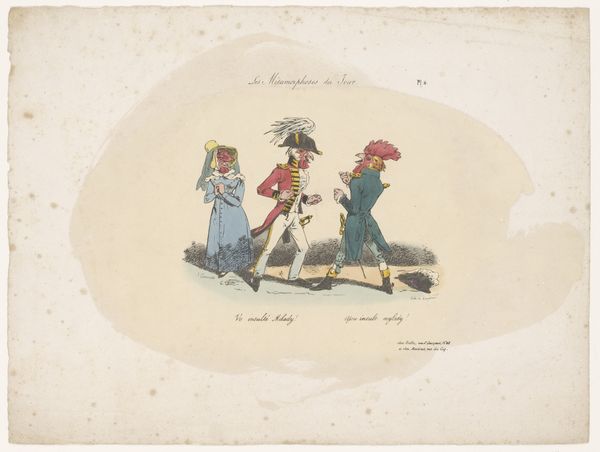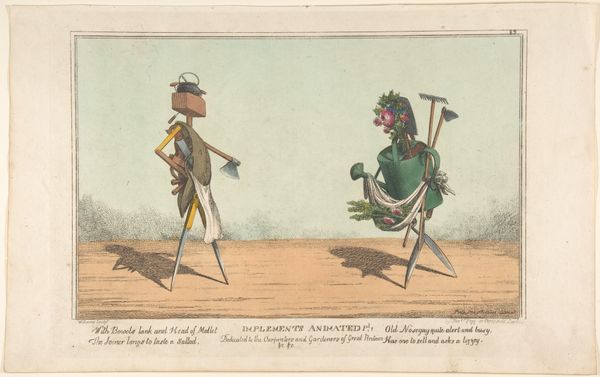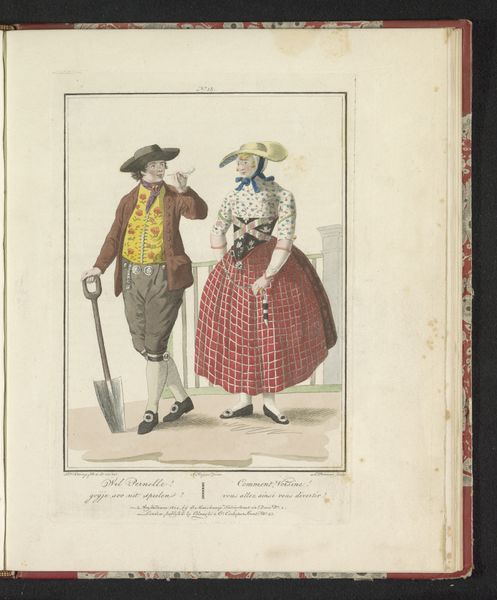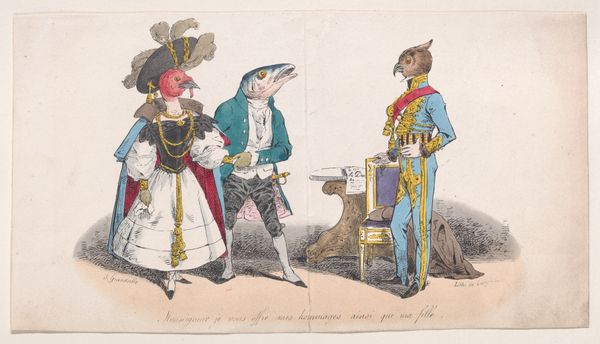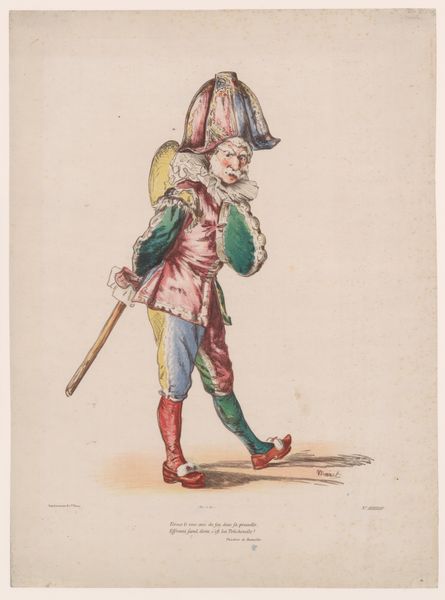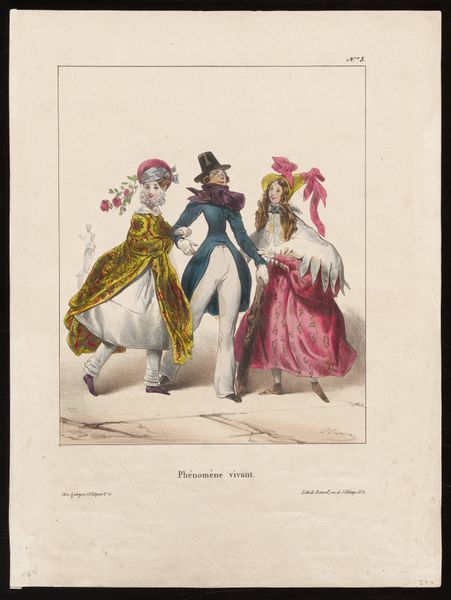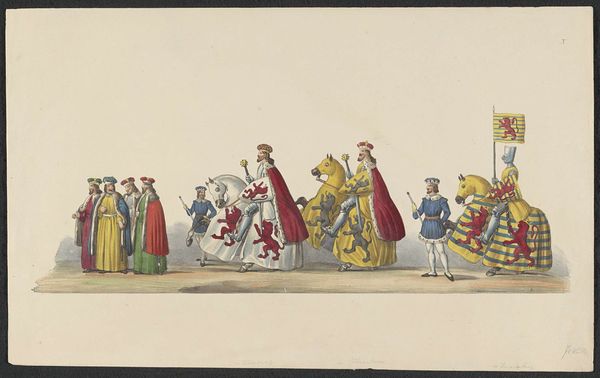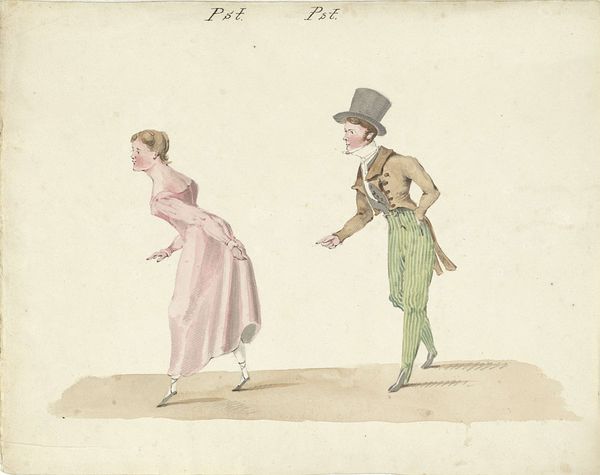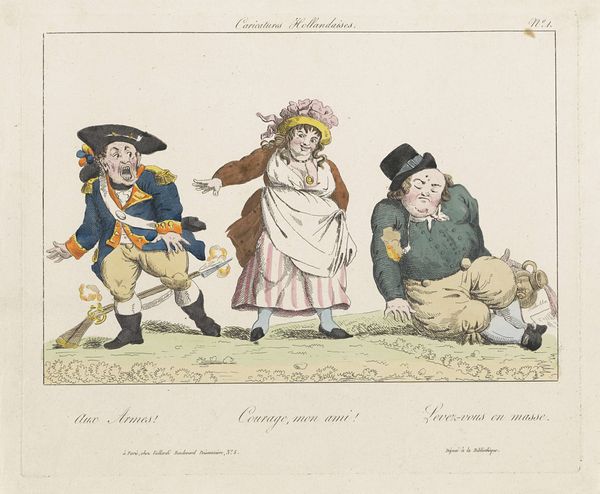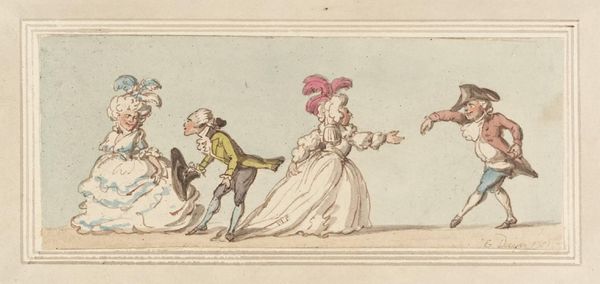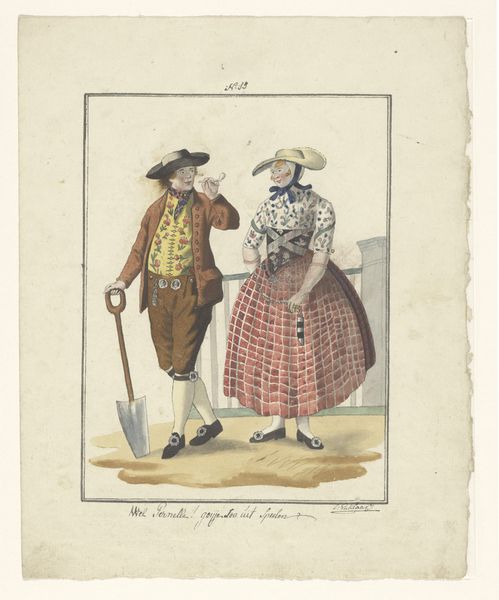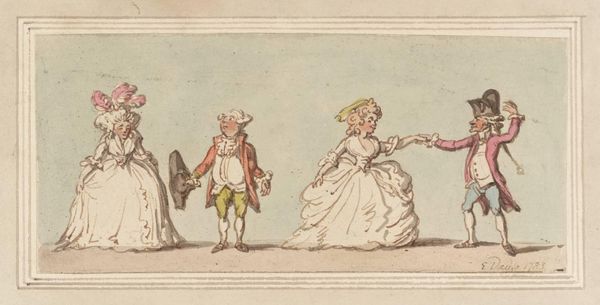
Dimensions: 5 x 6 1/2 in. (12.7 x 16.51 cm) (image)
Copyright: Public Domain
Editor: Here we have Jean Ignace Isidore Gérard Grandville's "Vo regardez Miledy," a lithograph from 1854. It feels like a scene from a satirical play, with these figures that are both human and animalistic. What's your perspective on this curious print? Curator: I see a reflection of 19th-century French society and its complex relationship with power, labor, and the burgeoning consumer culture. Grandville's choice of lithography, a relatively new and easily reproducible medium, is key. It democratized art, making social commentary accessible to a broader audience. Notice the costuming. What does their specific tailoring tell us about wealth distribution? Editor: It's interesting that you focus on the materials and the way it was made. I see it more as just an absurd scene! Curator: Absurdity isn't divorced from material reality, though. The lines of this lithograph, their crispness, resulted from skilled labor, reflecting the artisan's place in society. Moreover, these figures are anthropomorphic caricatures, exaggerating traits and likely satirizing particular social strata. Have you considered how animal characteristics critique human behavior within social hierarchies? Editor: I hadn't thought of it that way. I was mainly looking at it for the funny animal heads. It sounds like Grandville was making a statement not only with who he depicted but with how the artwork was made. Curator: Precisely. Think about the production and consumption of these prints. Sold in periodicals or as individual sheets, they entered the stream of daily life, shaping and reinforcing social perceptions and critiques through their existence as a consumable good. What, then, is the power of accessible art? Editor: That's a completely different way to consider it. So it’s about the print medium allowing the satire to become part of people's everyday lives and commentary, thanks to its accessibility. That’s really eye-opening. Curator: Indeed. By understanding the processes, labor, and materials involved, we gain insight into the socio-economic and political landscape in which the artwork was created and consumed.
Comments
No comments
Be the first to comment and join the conversation on the ultimate creative platform.
